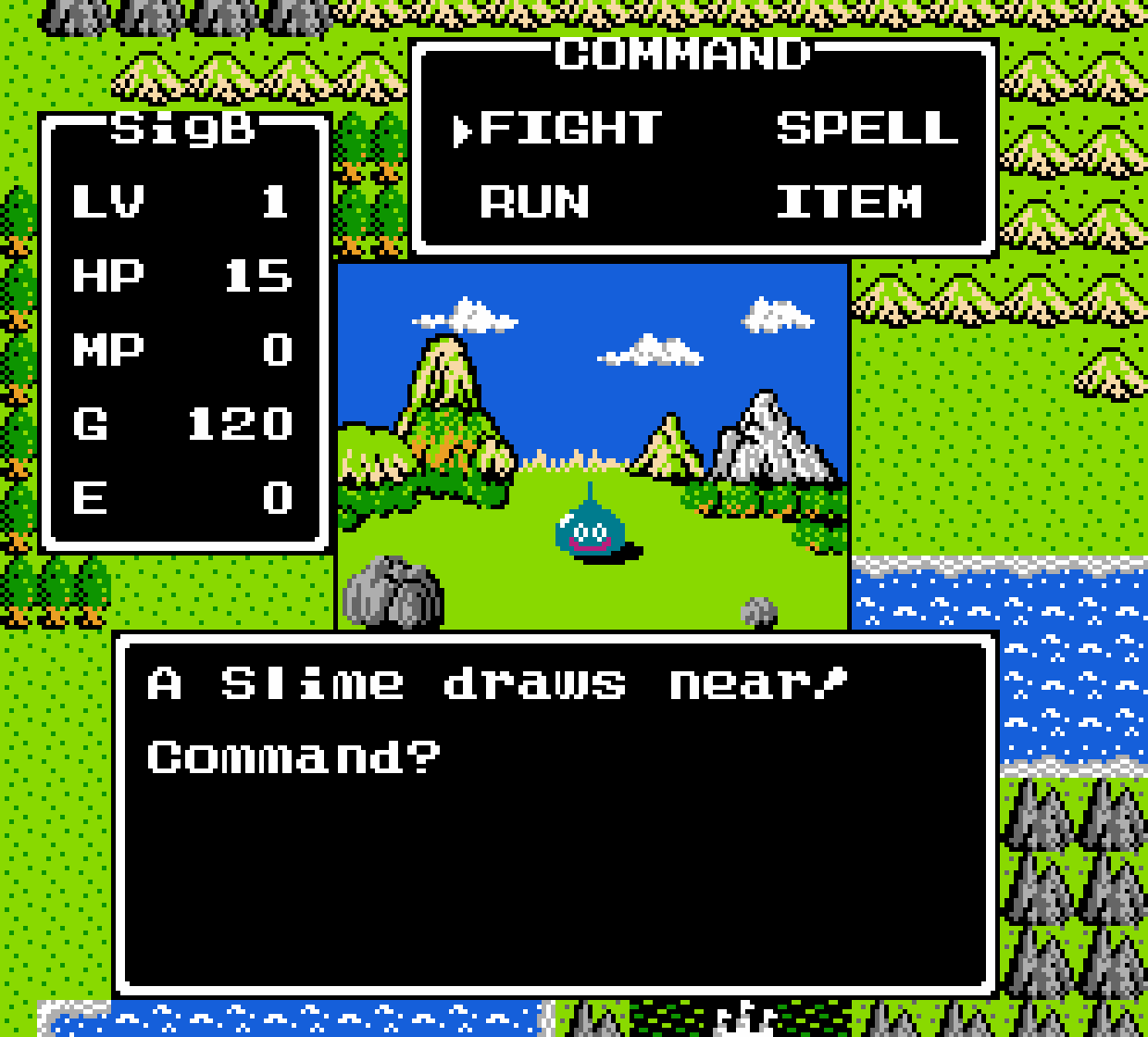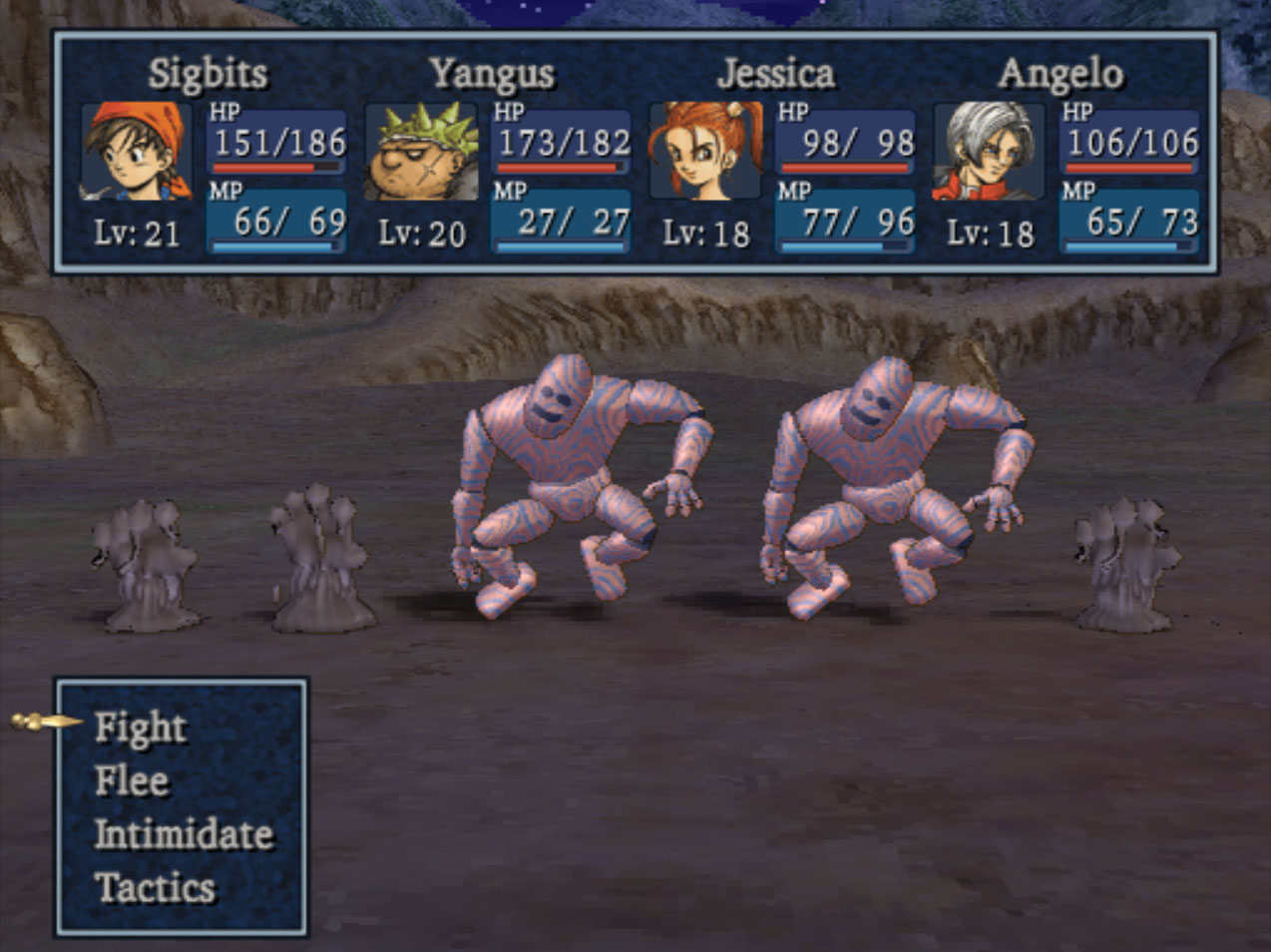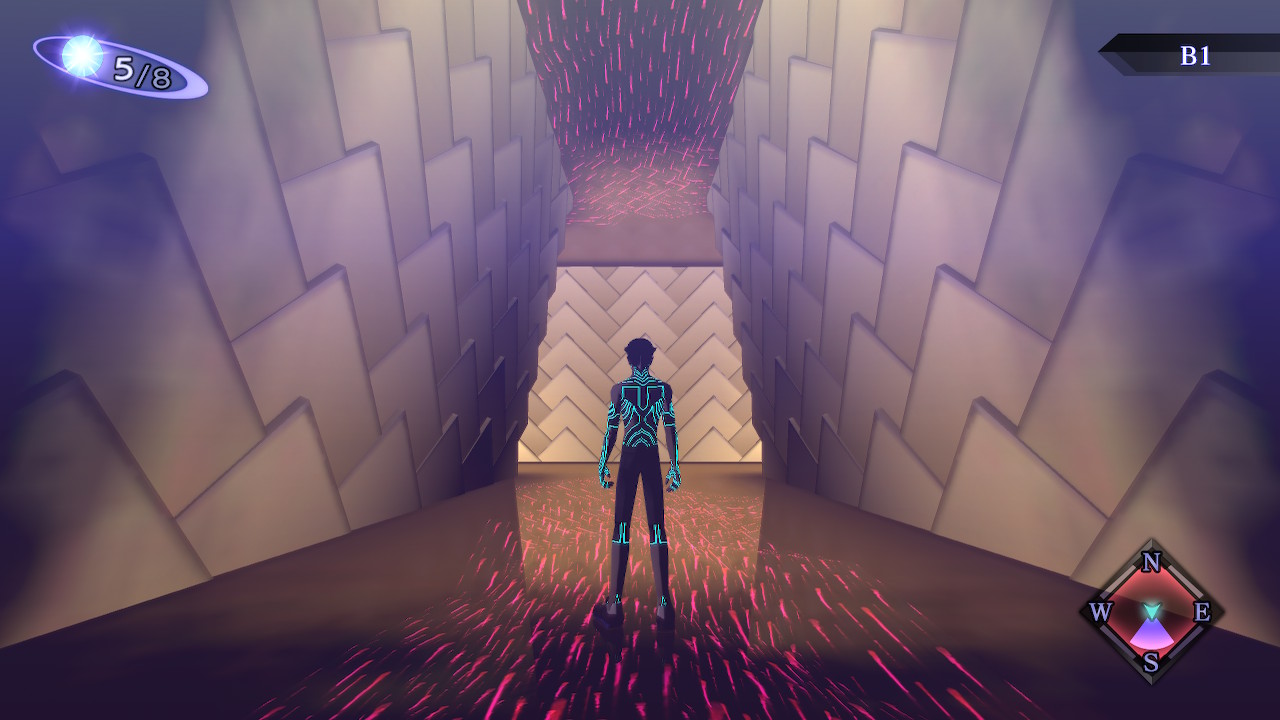Random encounters are a very contentious subject in JRPGs. Fans often brand it as a relic from the past, but some have a fondness for how it separates combat from exploration and creates a sense of surprise.
There hasn’t been a whole lot of effort dedicated to improving random encounters, but they have slowly changed over time. To analyze this evolution, I first started with a definition:
A battle transition that takes place at irregular intervals and randomizes the opponents.
This means that single monsters wandering the field in EarthBound and the radar-blips of overworld encounters in 7th Saga don’t count.

Next, after taking notes from dozens of games and canvassing the fanbase, I separated random encounters into 6 main categories:
- Triggers – Control when a battle is initiated.
- Selectors – Decide which enemies are chosen for the encounter.
- Modifiers – Environmental variables that can influence Triggers and Selectors.
- Effects – Elements the player has control over that can influence Triggers and Selectors.
- Indicators – Player-facing information on potential encounters.
- Minigames – Entire sub-systems that revolve around managing encounters.
For each category, I also proposed a few quick ideas to help improve random encounters, or simply provide a new spin on the mechanic.
Triggers

- Static – After every map transition — including coming back from a battle — a number of steps is randomly selected upon which the next fight will take place, e.g., the original Final Fantasy. Over time, a “grace” period was added to this counter during which battles can’t take place, ensuring there’s at least a bit of separation between consecutive encounters.
- Dynamic – At each step, a random roll is made to determine whether a battle occurs, e.g., Dragon Quest. The chance of an encounter typically grows with the amount of steps taken. Some tile types such as stairs or damage floors also prevent battles from triggering to avoid awkward transitions or seemingly unfair encounters.
- Time-Based – A more rare approach where combat is initiated via a timer that is reset with every map transition, e.g., Baten Kaitos. This means that battles can take place even if the player is standing still.
Older titles also occasionally used “spike tiles.” These always launched a battle when stepped on, often a boss fight, but were fairly indistinguishable from truly random encounters.
- Scale encounter rate by level-discrepancy between the party and the enemies. If underleveled or overleveled, encounters could be less frequent to provide extra breathing room.
- Link trigger-chance to narrative elements, e.g., sneaking out of a prison has a lower encounter at first but increases as an alarm is sounded, or a siege starts off with constant fighting but the rate of combat dwindles as the enemy forces are pushed back.
- Use total steps/time to alter encounter rate and the enemies summoned, e.g., traipsing around the dark forest for too long would “depopulate” the enemies and summon a guardian miniboss.
Selectors

- List – The map contains a list of potential encounters, one of which is randomly selected when combat is triggered. The probability of these encounters is often skewed, e.g., in Final Fantasy V, there are always 4 potential encounters: 2 common ones, 1 uncommon one, and 1 rare one. In dungeons, a prevailing practice is to tweak the list from floor to floor, ensuring there’s an increased sense of danger the further the player explores.
- Sector – Usually only relevant to the overworld, the map is split into different sections with each one containing its own encounter list, e.g., this famous breakdown of Draqon Quest. Sectors don’t always accurately match the layout, leading to some dangerous areas with encounters meant for much later in the game. While these can be quite frustrating, they have historically become fabled hotspots for grinding such as the Peninsula of Power.
- Terrain – The type of biome being traversed dictates which monsters can appear, e.g., the terrain-based overworld encounters in Final Fantasy VII. Additionally, terrain can be mixed with sectors to create unique encounter zones, such as the fabled Dinosaur Forest.
A few games also mix up the grind of fighting with non-combat encounters, e.g., the friendly monsters and the Ragtime Mouse of Final Fantasy IX.
- Use a linear list of encounters to ensure a smooth and interesting flow. Once the list is exhausted, encounters can go back to being fully randomized.
- Dynamically alter the weights of possible encounters based on which enemies have been fought to foster varied encounters. These weights could also change based on player HP/resources to decrease the frequency of punitive encounters (especially when escaping combat is not always a reliable option).
- Once again, change up the encounter list based on narrative progression — invading armies, migrating monsters, etc., can make old areas feel fresh again.
Modifiers

- Map Type – Battle frequency is based on the type of map being explored, e.g., in Final Fantasy, the encounter tracker decrements more quickly on the overworld than in dungeons.
- Map Rate – Each map has a scaling value that alters the frequency of battles, e.g., in Lunar 2, the map at the top of the Lionhead dungeon barely has any encounters compared to the lower floors.
- Map Limit – Each map has a maximum number of allowed encounters, after which battles can no longer take place, e.g., in Ar Tonelico, a “cleared” map remains free of combat until it’s re-entered.
- Tile Type – Mostly relevant to overworld maps, each terrain has a danger value that affects the encounter chance, e.g., in Dragon Quest, it’s more likely that a battle will occur on a desert tile than on a grass tile.
- Day/Night – Encounters differ based on time of day, e.g., in Dragon Quest III, tougher and more numerous enemies appear at night.
- If a map is fully explored, allow skipping of its encounters.
- Alter enemy selection based on dynamic weather effects such as a special enemy only appearing during a snowstorm.
- If a difficulty setting is implemented, use it to scale down the encounter rate/number of enemies while scaling up the battle rewards.
Effects

- Abilities – Spells or skills that alter the encounter rate, e.g., in Etrian Odyssey, “Lure” and “Stalker” can increase or decrease the chance of combat. Yang’s “Whistle” ability in Dragon Quest VIII goes even further, instantly summoning a random battle. Various Pokémon games also give battle abilities a passive functionality out of combat, e.g., if the first-slot Pokémon has the “Magnet Pull” ability, the chance of encountering a Steel-type enemy is greatly increased.
- Consumables – Usable items that often mirror Abilities, e.g., “Dark” and “Holy” bottles in Tales of Phantasia that can increase or decrease the encounter rate. Unfortunately, consumables typically only have a slight effect, severely limiting their utility. One exception is the “Siren” or “Alarm” item in Final Fantasy IV, which instantly initiates a fight against the rarest enemy group on the map, which can be useful when grinding for rare drops.
- Equipment – Passive effects toggled by wearing a weapon, accessory, or piece of armour, e.g., the “Charm Bangle” in Final Fantasy VI that halves the encounter rate.
- Vehicles – Most often vehicles simply disable combat, e.g., flying aboard the Red Wings in Final Fantasy IV. Phantasy Star IV is of particular note here as random encounters still happen while in vehicles, but the enemies that appear are entirely unique and not fought anywhere else.
- Cheats – Non-diegetic options like the encounter slider in Bravely Default and the encounter toggles common in remasters like that of Final Fantasy X.
- Provide intermittent shrines/fountains/springs that repel specific families of monsters, e.g., demons or flying enemies, giving a small reward for additional exploration.
- Implement Consumables that result in a 100% draw chance of specific enemies, creating a Monster Hunter like experience where otherwise-rare encounters are actively sought out.
- Create an upgradable Vehicle that can gradually reduce the encounter rate and provide (partial) battle rewards from combats that would’ve otherwise taken place.
Indicators

- Threat Range – Each map clearly shows the potential levels of its enemies, e.g., the message that appears whenever the player enters a new area in Octopath Traveler.
- Encounter Rate – Direct indicator of the map’s chance to enter combat, e.g., the little monster in Breath of Fire II’s menu that can be sleeping (no encounters possible), or in 1 of 3 levels of excitement, each state hinting at an increasingly higher encounter rate. Various player Effects can further alter this value, making the monster animate in a more lethargic or energetic fashion.
- Battle Countdown – Dynamic warning of imminent combat, e.g., the triangle indicator over the lead character’s head in Legend of Dragoon changes its colour from green, to yellow, to red as the chance of an encounter increases. In such systems, combat typically can’t occur until the indicator reaches its maximum danger level.
- Environmental – Organic parts of the map that telegraph dangerous areas, e.g., in Pokémon’s overworld, random encounters can only be triggered while walking on grass tiles.
- An alternate heatmap-view that highlights dangerous areas where encounters are more likely, or simply more challenging.
- A stamina-like meter over the player’s avatar. Its fill not only functions like a standard Battle Countdown, but a separate number dynamically changes to indicate encounter-chance, e.g., lower in dark corners of a dungeon, but higher in brightly lit gateways.
- A minimap superimposed with enemy icons indicating the most prevalent encounter types, e.g., Rusalki by the shoreline, bandits on the road, etc.
Minigames

- Wild Arms 3 – In dungeons, a warning message appears whenever combat is about to begin. The player then has a few seconds to press a button and spend a resource to avoid the fight. This resource can be collected during traversal, making exploration less punitive, and the cost itself can vary based on the party’s level. Exit Fate also provides a similar system, although in that game the enemies are simply bribed away with money.
- Blue Omen Operation – An encounter bar appears after a bit of exploration, filling up as the player walks around. A battle is initiated when the bar is full, but this can be paused and quickly reversed by stopping all movement. This creates something of an intermittent dynamic, but provides no patrol paths or other cues to observe during periods of inactivity.
- Fantasian – Battles can be banked and fought at a later time. The quantity of enemies that enter these fights become larger than usual, allowing more foes to be dispatched at once while boosting the value of buffs and multi-target spells.
Turning encounters into fully integrated systems is a concept with plenty of room for growth. Older CRPGs tied skills to previewing encounters, and newer ones often use resources to avoid ambushes while resting, but entirely new interfaces could also be implemented to make managing the mechanic more interesting.
- Additional elements appended to an opt-in system: availability is based on bestiary-completion, and some XP/gold is still gained while avoiding fights.
- A toggle button similar to the auto-combat interface in Persona 3, except it turns all random encounters on or off. While off, a character’s MP are continuously drained by keeping up a repel/invisibility spell, creating a resource-drain similar to actually battling and recovering from combat.
- All encounters are opt-in, but avoiding them alters a reputation metric. A “cowardly” reputation can result in being denied entry to certain settlements and minibosses being sent out to punish the dishonourable behaviour. Conversely, a “bloodthirsty” reputation from grinding too much can depopulate enemy groups or alter unlockable companions and even entire endings.
Aside from simply limiting encounter rates, there are plenty of steps that can minimize common frustrations with random battles:
- Avoid lengthy combat transitions.
- Provide dungeon shortcuts to quickly exit or pass through explored areas.
- Lessen encounter rates in maps with puzzles.
- Add quick-travel options that allow for combat-free backtracking.
Games that suffer from some of the above points are fairly easy to point out, but which games do you think did random encounters right? Did they contain any notable mechanics I missed, and what else would you do to improve on existing encounter systems?
Shadow Hearts had a graveyard section where additional bosses and summons got unlocked after fighting enough battles.
Yep, and I was thinking of that implementation while coming up with “Minigame” ideas. However, from what I recall Malice was based on the number of defeated enemies — maybe only by the protagonist? — and not the encounters themselves.
It was a neat narrative and gameplay extra, though, and I particularly liked being able to enter the graveyard at any time from the main menu.
After recently revisiting the Dragon Warrior/Quest games I was reminded that both terrain type and geographic region had a lot to do with the type of encounter triggered. For instance, when you’re initially venturing out in the first Dragon Warrior you’ll notice that any time you cross bridge into a new land mass the encounters typically get much harder (an NPC will even tell you this). But in a more subtle respect, you could navigate the first continent pretty confidently by sticking to the open plains and grass. The encounters were fairly regular with low-level enemies. If you venture across the hills, forest, and swamp tiles you’ll find the encounters more frequent and more dangerous. I thought this did a lot to add surprise, intuition, and natural exploration to the game.
The sectors in Dragon Quest didn’t perfectly overlap the landmass, but I agree that the game had a fairly intuitive implementation of random encounters. There was a sense of danger in progressing further out from the starting point, and different terrain did correspond to higher encounter rates. I was actually surprised that more games didn’t follow this approach with more organic signaling to players.
Hello – I enjoyed your analysis of Random Encounters :) it’s certainly been a long time coming!
I feel you could have expanded on your definition and what you meant by the “slow changes over time”. As I feel there is a lot of good information to be extracted from games such as the more recent Final Fantasy games and NiNoKuni where you can see the enemies roaming.
I guess you left these examples out as they are not “technically” random? (as the player can avoid/pick and choose their encounter based on the presenting enemy). But your inclusion of categories such as “Indicators” and “Minigames” makes me think that they could have potentially been included?
Would love to chat and pick your brain :)
The slow changes was more a comparison to JRPG combat, where elemental affinities, status effects, limit breaks, summons, class-abilities, etc. all drastically changed the system itself. This was something that also differed a lot from game to game, whereas random encounters typically behaved the same way from game to game. The additions to encounter systems were consequently much more minor, with elements like “grace periods” being added so that encounters couldn’t happen back-to-back.
And yes, if you can see the encounter-trigger in the map/field, it’s no longer fully random. In these cases, the gameplay often revolves around getting in free hit, avoiding enemy patrols, different behaviours once an enemy spots you, etc., but that could probably be a topic for a whole other post.